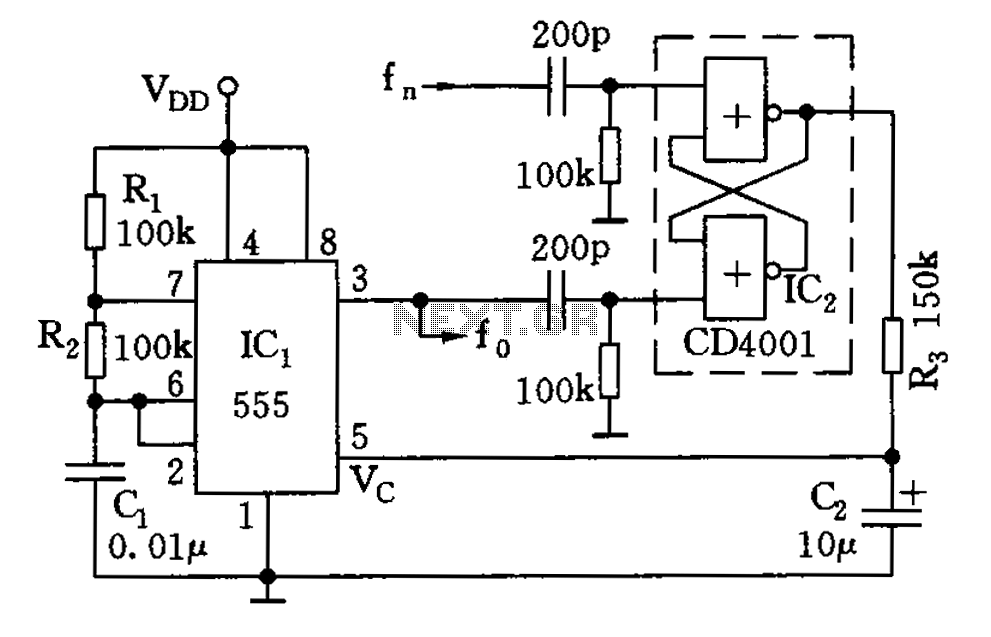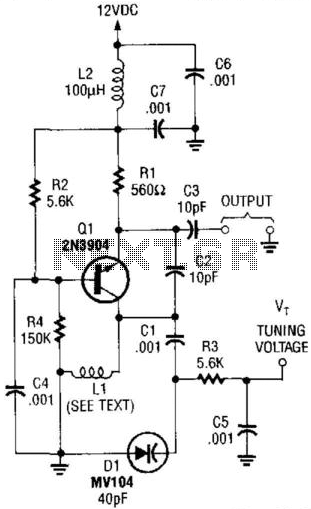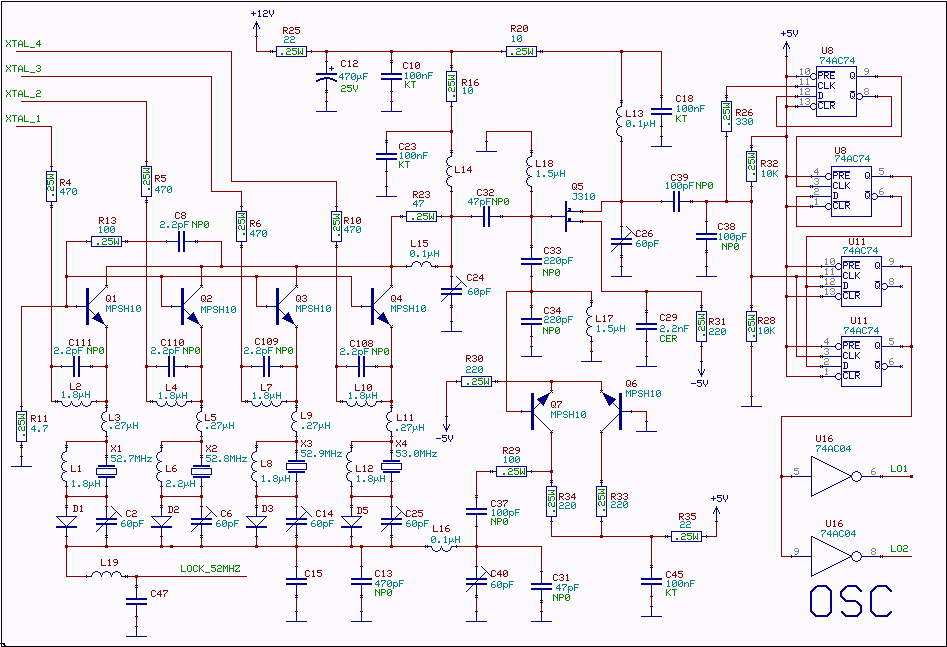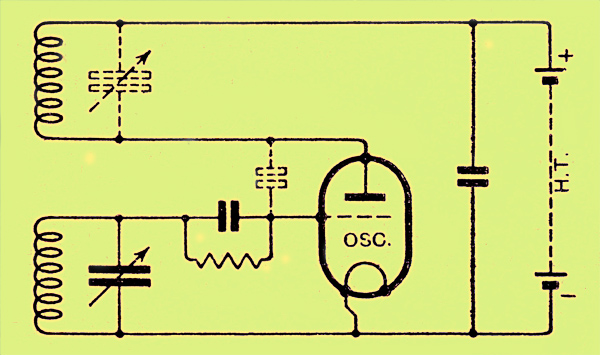
Crystal-controlled oscillator for ssb

This oscillator may contain several switched crystals to provide channelized operation. A buffer amplifier may be added if desired.
The oscillator described is designed to utilize multiple switched crystals, enabling it to operate across various frequency channels. This feature is particularly beneficial in applications requiring precise frequency selection and stability, such as in communication systems and signal processing equipment. Each crystal can be switched in and out of the circuit, allowing for rapid changes in frequency without the need for physical adjustments.
The inclusion of a buffer amplifier is optional but can enhance the overall performance of the oscillator. The buffer amplifier serves several purposes: it isolates the oscillator from the load, preventing loading effects that could alter the frequency stability; it provides impedance matching to ensure maximum power transfer; and it can amplify the output signal to a level suitable for further processing or transmission.
In the schematic, the oscillator circuit typically includes a configuration of active components, such as transistors or operational amplifiers, alongside passive components like resistors and capacitors to form the necessary feedback loop for oscillation. The switched crystals are integrated at the input stage, where each crystal's frequency characteristics determine the output frequency of the oscillator.
The buffer amplifier, if included, is usually placed immediately after the oscillator output. It may consist of a single transistor or an operational amplifier configured as a voltage follower to maintain high input impedance and low output impedance. This configuration ensures that the oscillator can drive subsequent stages without distortion or significant signal loss.
Overall, the design of this oscillator with optional buffer amplification provides flexibility and adaptability for various electronic applications, ensuring reliable and accurate frequency generation.This oscillator may contain several switched crystals to provide channelized operation. A buffer amplifier may be added, if desired.
The oscillator described is designed to utilize multiple switched crystals, enabling it to operate across various frequency channels. This feature is particularly beneficial in applications requiring precise frequency selection and stability, such as in communication systems and signal processing equipment. Each crystal can be switched in and out of the circuit, allowing for rapid changes in frequency without the need for physical adjustments.
The inclusion of a buffer amplifier is optional but can enhance the overall performance of the oscillator. The buffer amplifier serves several purposes: it isolates the oscillator from the load, preventing loading effects that could alter the frequency stability; it provides impedance matching to ensure maximum power transfer; and it can amplify the output signal to a level suitable for further processing or transmission.
In the schematic, the oscillator circuit typically includes a configuration of active components, such as transistors or operational amplifiers, alongside passive components like resistors and capacitors to form the necessary feedback loop for oscillation. The switched crystals are integrated at the input stage, where each crystal's frequency characteristics determine the output frequency of the oscillator.
The buffer amplifier, if included, is usually placed immediately after the oscillator output. It may consist of a single transistor or an operational amplifier configured as a voltage follower to maintain high input impedance and low output impedance. This configuration ensures that the oscillator can drive subsequent stages without distortion or significant signal loss.
Overall, the design of this oscillator with optional buffer amplification provides flexibility and adaptability for various electronic applications, ensuring reliable and accurate frequency generation.This oscillator may contain several switched crystals to provide channelized operation. A buffer amplifier may be added, if desired.





